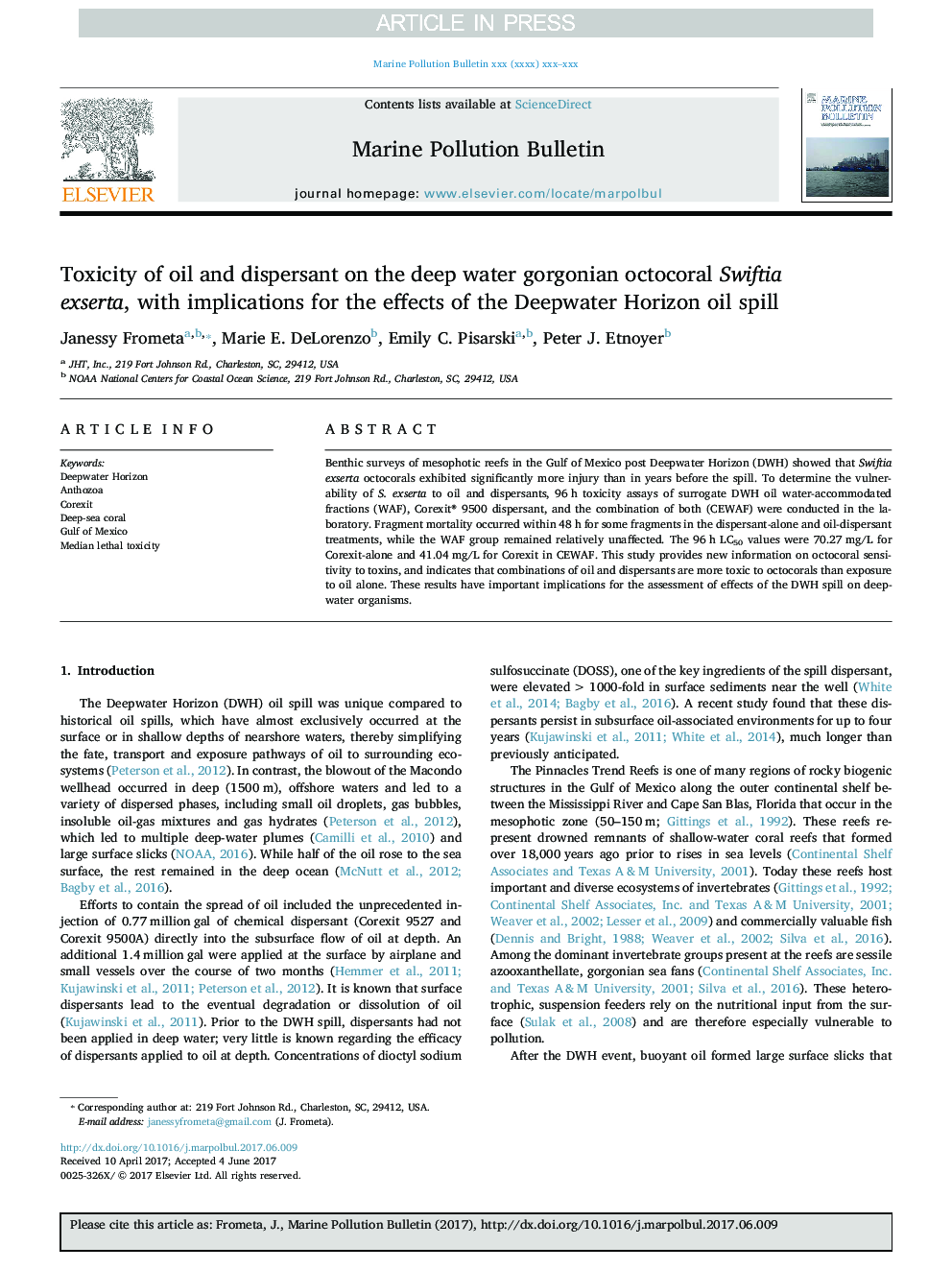| Article ID | Journal | Published Year | Pages | File Type |
|---|---|---|---|---|
| 5757237 | Marine Pollution Bulletin | 2017 | 9 Pages |
Abstract
Benthic surveys of mesophotic reefs in the Gulf of Mexico post Deepwater Horizon (DWH) showed that Swiftia exserta octocorals exhibited significantly more injury than in years before the spill. To determine the vulnerability of S. exserta to oil and dispersants, 96Â h toxicity assays of surrogate DWH oil water-accommodated fractions (WAF), Corexit® 9500 dispersant, and the combination of both (CEWAF) were conducted in the laboratory. Fragment mortality occurred within 48Â h for some fragments in the dispersant-alone and oil-dispersant treatments, while the WAF group remained relatively unaffected. The 96Â h LC50 values were 70.27Â mg/L for Corexit-alone and 41.04Â mg/L for Corexit in CEWAF. This study provides new information on octocoral sensitivity to toxins, and indicates that combinations of oil and dispersants are more toxic to octocorals than exposure to oil alone. These results have important implications for the assessment of effects of the DWH spill on deep-water organisms.
Related Topics
Physical Sciences and Engineering
Earth and Planetary Sciences
Oceanography
Authors
Janessy Frometa, Marie E. DeLorenzo, Emily C. Pisarski, Peter J. Etnoyer,
